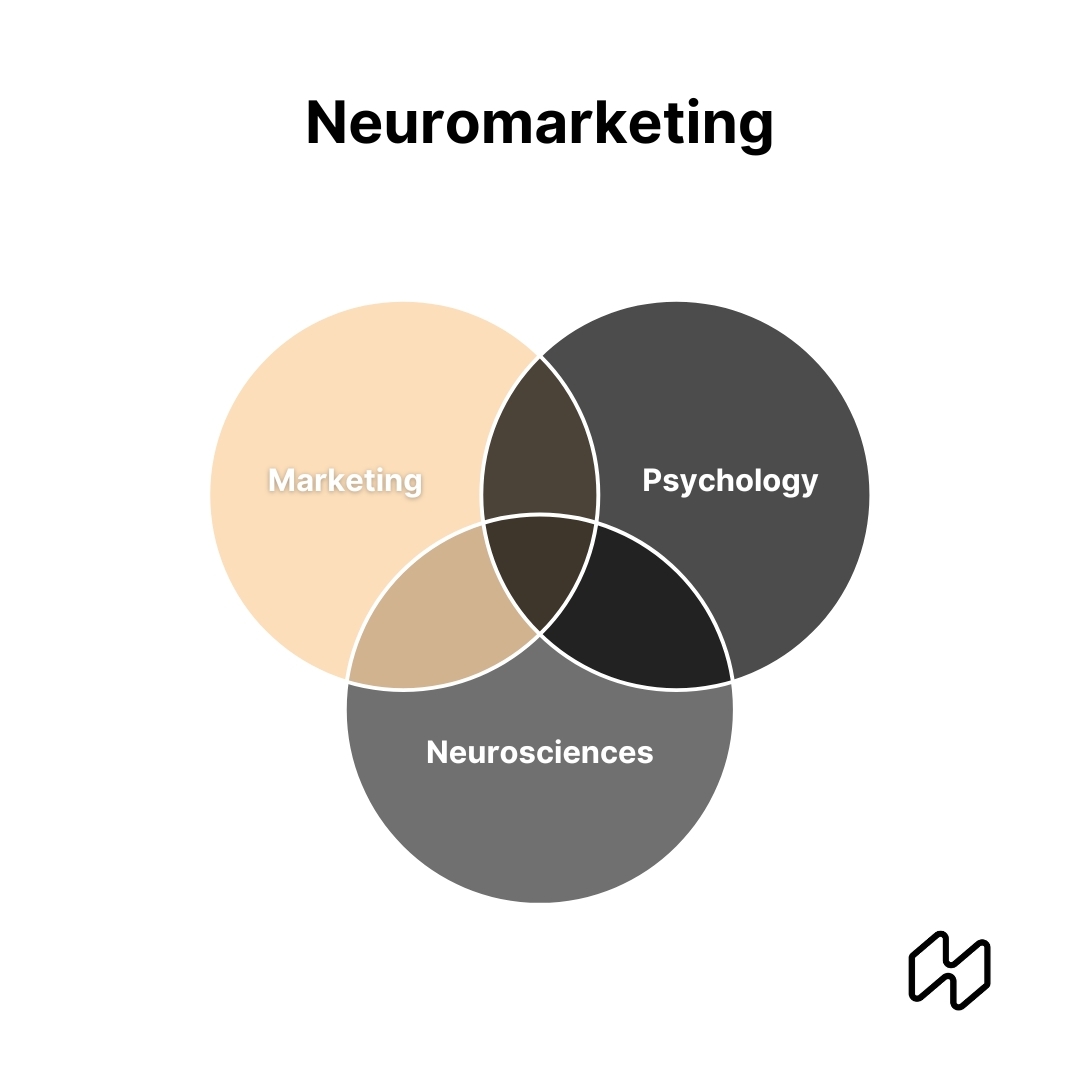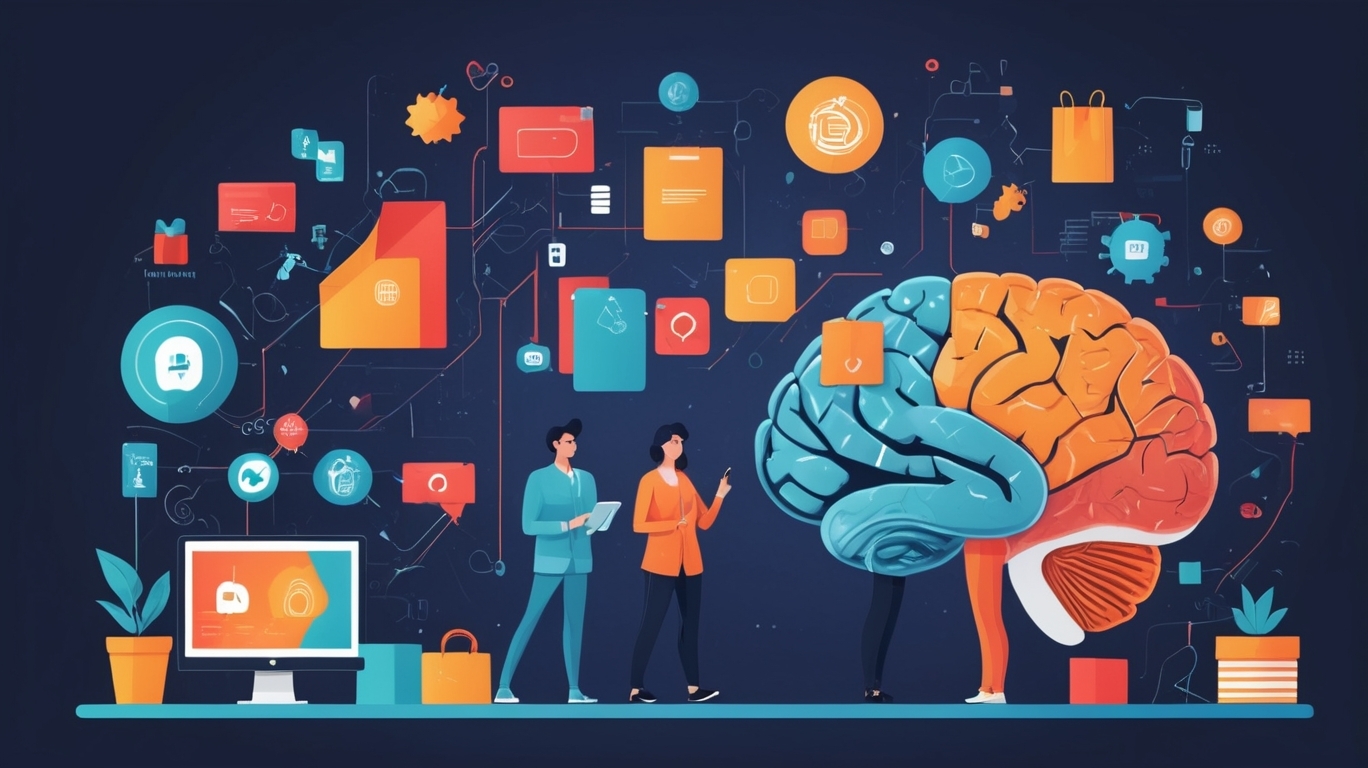Neuromarketing: how can it help you create an innovative user experience?
By Yahong Zhang |Table of contents
This article has been updated in July 2024 by Sabrina KHADIVI.
Many of the biggest companies in the world are using neuromarketing right now, to dive into consumers’ minds and to understand how they respond to external triggers and how instincts work. Names like Microsoft, Pepsi, Daimler, Mercedes Benz have been investing in the practice to test designs, products and advertisements, while luxury brands are looking for a new way to convey messages, pushing exclusivity, elegance and user experiences more and more innovative.
What is neuromarketing?
Neuromarketing is an interdisciplinary field that merges marketing, psychology and neuroscience to study consumer behavior towards products and services to offer with the aim of optimizing marketing strategies.
Neuromarketing, also known as consumer neuroscience, refers to the measurements of physiological and neural signals to gain insights into customers’ motivations, preferences, and decisions.
It relates to measuring brain activity in different contexts of marketing techniques and stimuli, to make a connection between consumers’ behaviors and external factors, to identify patterns and to further use these insights to drive certain actions.

Why neuromarketing? What are the benefits?
Since the advent of new technologies, ads have never been so present. This means that people are more than ever before flooded with branded information and content to assess and disseminate and to make purchasing choices.
In this context, it is almost impossible to think that picking one product over the other tens of similar ones could be a rational decision. With so many options and so much information directed their ways, shoppers begin to choose products based on emotional and psychological factors more than logic.
Thanks to neuromarketing, marketers can understand and predict consumer preferences to optimize marketing strategies. In this interdisciplinary field we find A/B testing which can be optimized by 3D. But how?
3D modeling and visualization tools such as those provided by Apviz, can be used to create virtual prototypes in order to interact with the product. This therefore allows:
- Performance analysis: Neuromarketing can identify which elements attract the most attention or evoke positive emotions. Using AI and insights from these analyses, companies can create variations of 3D products that maximize these elements and then conduct A/B tests to validate the hypotheses.
- Product and design optimization: The results of the analyses can lead to changes in designs, which can be easily modified using 3D models. For example, if studies show that consumers react positively to certain colors or shapes, these characteristics can be integrated into 3D prototypes for testing.
- Real-time feedback: The combination of neuromarketing and 3D allows for the collection of valuable data in real time. For example, consumers can interact with 3D models online, and their reactions (measured via eye-tracking technologies, EEG, etc.) can provide immediate and accurate feedback.
The use of new technologies therefore allows a saving of money and time, which are therefore precious resources. A 3D asset management platform like Apviz allows you to manage 3D prototypes and carry out tests on a panel of consumers without having to manufacture the products and all industries can benefit from it.

Marketing in general studies how consumers make these purchasing decisions, while neuromarketing takes it to a new level, by using brain scanning techniques and technology to understand how consumers behave and guide thinking in order to offer a more targeted and adapted user experience. In this context, this approach makes it possible to optimize the experience to better meet expectations while being up to date with current marketing trends.
To learn more about the trends in digital marketing such as 3D e-commerce.
1. Brain analysis is more reliable than answers from interviews or surveys
Some may wonder whether neuromarketing is actually necessary or whether the data it offers brings added values. The answer is yes.
It reveals emotions and reactions that might not be noticeable or communicated by respondents otherwise.
Researchers at the Emory University managed to use fMRI to successfully predict whether a song would become popular. They compared brain responses to sales data for the next 3 years and confirmed the relevance of neuromarketing.
What’s interesting is that, unlike their brain activities, the respondents’ answers are not reliable. When asked whether they liked the songs, respondents’ answers differ from the results of brain analysis.
This showcases that neuromarketing may better analyze how consumers feel about things than interviews or surveys, as respondents may not always know how to interpret their emotions. They may also feel pressured to respond to a certain question against their own will. While communication isn’t always accurate and transparent, brain analysis may not be fooled.
2. It provides an objective measuring system that is scalable.
Another study. In 2021, Innerscope Research tested a line of USB flash drives in labs. They collected heart rates and eye tracking data from respondents viewing the items, performed exploratory analysis and rated the flash drives from 1 to 30. Without receiving any sales data or other information, this research company managed to identify four of the five bestsellers. The research proved that neuromarketing may actually predict sales.
If you ask consumers to assess or grade a commercial product from one to ten, the results you get depend very much on their own understating of the system. An 8 for someone might be mediocre, while for someone else, it might be quite satisfying. In this case, results can be quite unreliable.
Moreover, integrating results from different countries or cultures will make the situation even worse. Fortunately, neuromarketing enables researchers to assess emotions or reactions in a more objective way, making results comparable.
How does neuromarketing work?
The most common tools used to measure neurological brain activities are EEG (electroencephalography), fMRI (functional Magnetic Resonance Imaging) and Steady State Topography (SST).
fMRI is used for monitoring brain activities by assessing the subjects’ blood flows, while responding to audio and visual stimuli. Depending on which parts of the brain light up, researchers understand each person’s emotional response and, thus, see what the images, sounds or clips trigger.
Apart from the ones mentioned above, there are also solutions which infer neurological responses by proxy, such as eye tracking, facial coding and heart rate monitoring, aimed to tell what is attracting consumers’ attention and what emotions they are feeling. These tools are less technical, less expensive, easier to implement and may easily be paired with traditional marketing research tools like surveys and focus groups.
Neuromarketing principles used in the luxury industry to offer unique customer experiences
Some marketers might consider neuromarketing research too complicated or too expensive. Fortunately, there is an alternative solution: Using established neuromarketing principles. It enables professionals to take advantage of the studies that have already been confirmed, it is this approach that allows them to be more creative in innovating user experiences, whether online or in store.
The luxury industry is one of the most impacted industries by neuromarketing, because luxury consumers tend to make decisions based on emotional factors rather than on costs. User experience is essential, the consumer comes looking for emotions, a new interaction. Thanks to new technologies such as AI (Artificial Intelligence) and AR (Augmented Reality), companies can offer exceptional experiences online on their e-commerce site or in store. We find virtual try-on or 3D configurators that offer personalize or customizable products. The French jewelry brand Fred adopted the technology of 3D configurators and virtual try-on for their Force 10 bracelet collection, which allowed them to increase their conversion rate by more than 30%.
You want to know more about the contribution of user experience in the luxury industry?
1. Color psychology
According to psychology, colors influence human perceptions and cause different emotions in people, whatever the cultural background or personal preferences.
This is why, when creating a product, specialists need to understand the brand’s values and attributes and associate them with colors that can successfully convey the message. Starting from this point, professionals can later define the color palette that may be used further in window displays, websites, social media and so on.
Take pink, for example. The color is associated to femininity, it’s playful, warm with a young and modern feel to it. It is also found to be able to add a luxurious touch to a product. This is why pink is the choice of multiple brands like Victoria’s Secret.
Of course, colors have universally accepted qualities; but in time, we may add meanings to them and even get them accepted by the collective perception.
While blue in most cases means consistency, dependability, trust and peacefulness, suggesting the integrity and competence of brands, the Tiffany blue goes beyond all these meanings. The color has now made such an impact on consumers that it may be recognized by itself, without any other branding element.
Discover one of the secrets of luxury brands: colorimetry.
2. Anchors
In neuromarketing, anchors are points of reference. As defined, “Anchoring or focalism is a cognitive bias where an individual depends too heavily on an initial piece of information offered (considered to be the «anchor») to make subsequent judgments during decision making. Once the value of this anchor is set, all future negotiations, arguments, estimates, etc. are discussed in relation to the anchor.
In luxury neuromarketing, anchors refer to iconic products that define a brand and represent references for consumers. The Hermès Kelly and Birkin bags, the Gucci Dyonisus, the Chanel 2.55 or Louis Vuitton Speedy are the items that attract consumers and remain in their minds as aspirational and must-have items.
These anchors not only help set a tone for brands but also help sell other items, like keychains, scarves, wallets that are pricey but still cheaper than average. This way, they become “affordable” to aspiring consumers.
3. Scarcity
People are afraid of losing out; luxury buyers, too. They want what they can’t have and are willing to make the effort for it. Products that are in short supply or which aren’t available to wide audiences are extremely desired and perform very well sales-wise, because they create a sense of scarcity and exclusivity.
Hermès is an example of such a neuromarketing strategy. The brand’s exclusivity is guaranteed through its limited offer and restrictive prices, which position iconic bags like Birkin and Kelly above $10,000. The company has such a restrictive distribution and expansion strategy that demands for its products are consistently high and the market is never saturated.
Hapticmedia: a start up specialized in digital user experiences for e-commerce.
Hapticmedia has worked with multiple luxury brands including Piaget, Guerlain, Kenzo and has over 15 years of expertise in immersive technologies including 3D visualization, customization and configuration, engraving, Augmented Reality, Virtual Try On, and is supported and covered by LVMH, Forbes, Les Echos, Le Point, BFMTV.
Check here to see our client projects with Piaget, Gerlain, Kenzo, Baume & Mercier, Baccarat, Edenly or contact us now to see the visible improvement we will bring to you.
References
https://hbr.org/2019/01/neuromarketing-what-you-need-to-know
https://www.neuro-insight.com/what-is-neuromarketing
https://www.neurosciencemarketing.com/blog/articles/what-is-neuromarketing.htm#
https://uxdesign.cc/the-impact-of-color-psychology-on-branding-bfa52f9438de
https://en.wikipedia.org/wiki/Color_psychology
https://jingdaily.com/how-hermes-won-chinas-heart/
Contact Hapticmedia now to see our successful user cases and the visible improvement we have brought to our clients. You will be amazed.